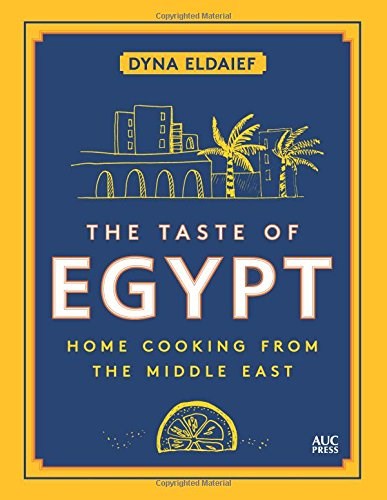
The Taste of Egypt: Home Cooking from the Middle East
Tom Verde
Dyna Eldaief
2016, AUC Press, 978-977-416-755-3, $35 hb.
While this colorful volume includes many of the usual Egyptian ingredients—fava beans (fuul) and lamb, bulgur and eggplant—it is a far-from-conventional cookbook. To begin with, the author explains that she is “an Australian born to Egyptian parents” who learned many traditional recipes from her mother or relatives in Cairo while taping a Middle Eastern reality-TV cooking show. She adds that “many Egyptian dishes are great for kids,” an often overlooked yet obvious virtue of recipes featuring macaroni and tangy tomato sauce (koshari), lemony sugar syrup (drenching atayef, crunchy, panfried “pillows” of pastry stuffed with walnuts and raisins) and the foundations of an Egyptian mom’s meat loaf (kobeba): ground beef fortified with bulgar and spiced with cinnamon and nutmeg. Grown-ups might be more receptive to slow-cooked oxtail (‘akkawi)or lamb brains with egg (mukh ma’el-beid). This book, from an Egyptian cook raised 12,000 kilometers away from the source of her inspiration, holds a little something for everyone.
.png?cx=0.45&cy=0.59&cw=382&ch=519.4922937443337)